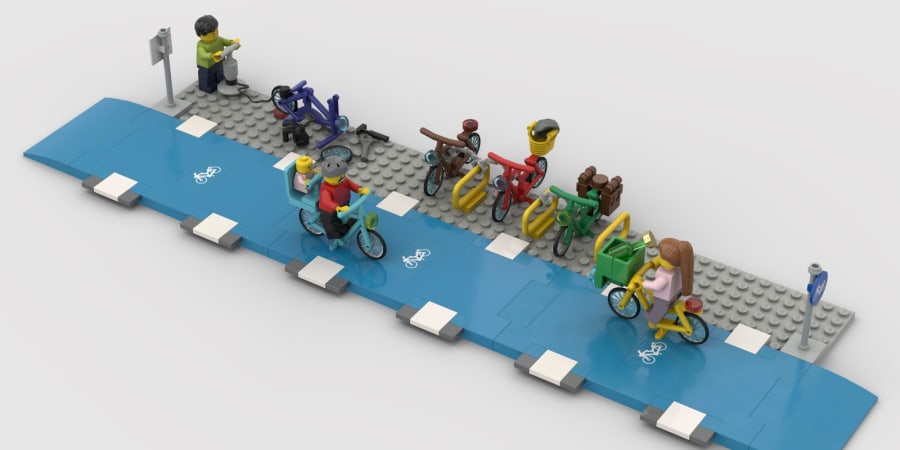
Bike lanes, Lego, and the struggle for a new bicycle culture
The campaign for mobility equity has found an unlikely battlefield in recent years: the Lego world. Since 2019, a person named Marcel Steeman has been pushing for the inclusion of bicycle lanes in its toy cities. At last, the company is beginning to relent, but this episode raises an interesting question: do we need to focus more on pushing for bicycle “culture?”
You can read The Verge’s article about the whole bike lanes versus Lego saga, and you can vote to support even more improvements here.
One overarching theme of my blog is the struggle against car culture. Many people recognize different “original sins” as roots to all of our modern social problems, and I myself am sympathetic to idea that cars are to blame. Name a problem with society, and you can trace it to cars. Racial segregation? Interstates exacerbated it. Police brutality? Ubiquitous cars require constant policing. People literally dying in the streets? We rationalize that car “accidents” are acceptable. The weakening of families? Cars enabled it. Children don’t play outside anymore? Cars are dangerous. Americans are drowning in debt? Car loans. Climate change? Car exhaust. Obesity? Cars. And the list goes on.
We certainly need to tackle this problem on an engineering and political level, but we often overlook the cultural aspect of the issue. To many Americans in car-centric communities, living without cars feels like a foreign culture, incompatible with everything they know. That is incorrect, and that notion needs to change.
The campaign for bike lanes in Lego sets should be a small step in a much larger battle. For example, consider the last time you saw a bicycle rider or a pedestrian in a movie or TV show. It almost never happens. Bicycles are typically only included as comic relief, usually paired with an obnoxious man in lycra or an eccentric vagrant. Now consider cars in popular media. They’re so ubiquitous that they’re often just a default setting for action and dialog. With the exception of sci-fi or historical films, it’s impossible to avoid cars in movies.
Perhaps media is just being realistic, and the average American life really does just exist in a series of office spaces, parking lots, and car rides between them. I can’t fault artists for depicting reality, but I can fault them for depicting its flaws uncritically. Most people aren’t always offended by cigarettes in films, but they usually are offended if the film glorifies smoking or is marketed towards children.
I think one great arena to continue this fight is in curbing car advertising. But that’s not enough. Like Steeman, we need to find ways to add a positive presence of bicycles and pedestrians in the popular consciousness.
One takeaway from this Lego episode: there’s a lot of social capital out there that can be harnessed to improve bicycle representation. Hopefully the small Lego victory can inspire us to push for more changes.
